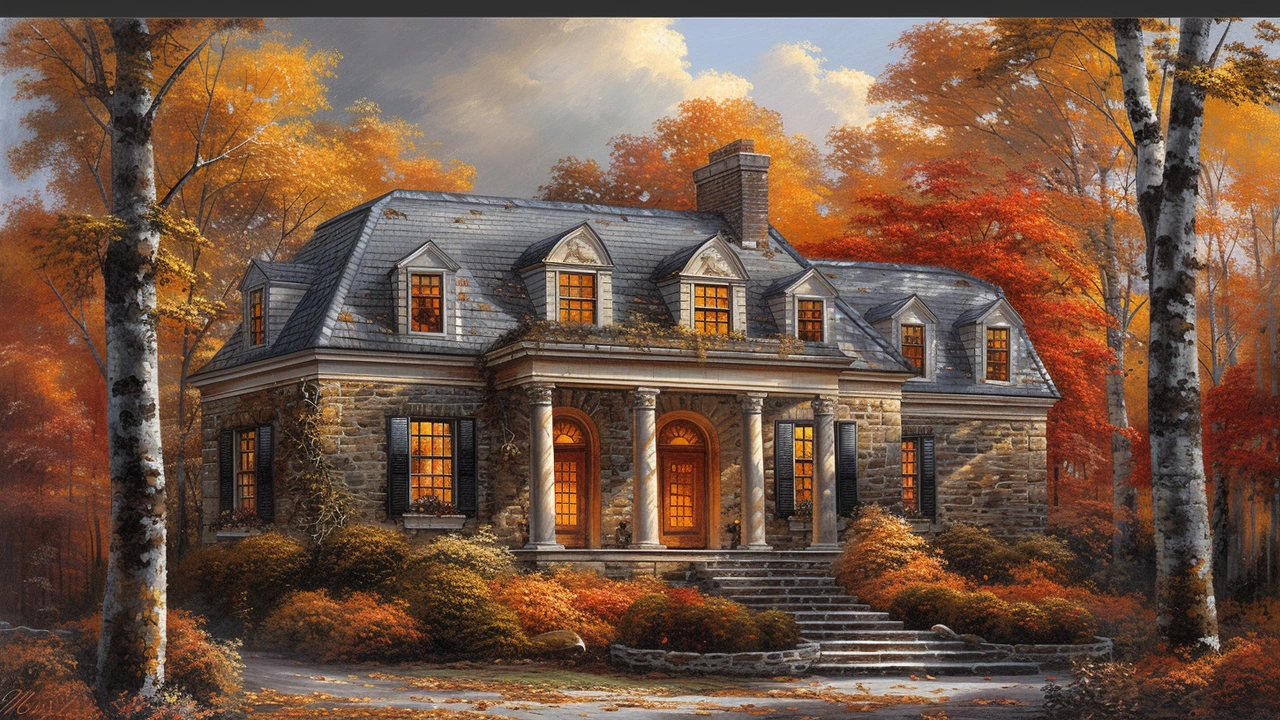Let me tell you, guys, Dutch Colonial Revival Architecture is like the Brad Pitt of the architectural world - always appealing, endlessly charming, and never going out of style! This architectural style, with its distinctive gambrel roofs and flared eaves, has been wooing us since the late 19th century (talk about long-lasting love!). Think about it, the style is a perfect blend of practicality and aesthetics, sort of like combining your favorite sneakers with a fancy tuxedo. You just can't help but admire the way these homes seem to warmly welcome you with open arms, or rather, wide porches! So, if you're into a classic style with a hint of the exotic, hop on the Dutch Colonial Revival Architecture bandwagon - it's a ride that never gets boring!
Dutch Colonial Revival Architecture: Key Features and Practical Tips
Dutch Colonial Revival architecture appears in towns across America and beyond. You can spot it by the gambrel roof, which has two slopes per side and creates a barn-like silhouette. Dormers often run across the front, giving usable upper-floor space. Exteriors vary: wood shingles, clapboard, or brick, but the roofline is the unifying element. Windows are usually double-hung with divided lights; shutters are often decorative.
The style grew from 17th- and 18th-century Dutch houses and returned in the late 1800s and early 1900s when homeowners wanted nostalgic, sturdy homes.
Why it matters: the gambrel roof gives more usable space without a full second story, which made these houses efficient and affordable. Today collectors and families prize these homes for character, flexible interiors, and solid construction.
Restoration tips: start with the roof to stop leaks and protect structure. Keep the gambrel shape and use like-for-like materials when possible, original wood shingles or accurate replacements preserve the look. Insulate carefully under the roof to improve comfort while protecting interior trim. Repair window frames and sashes rather than replace them where possible; matching profiles keeps the historic feel.
Practical upgrades: hide modern systems in basements or closets to avoid altering visible surfaces. Convert dormer areas into bedrooms or home offices for daylight and headroom without changing the exterior. Choose period-friendly paint colors: muted earth tones, soft whites, and historic blues or greens.
Common variations and regional differences
Northeast examples often use wood shingles and compact porches; Midwest houses may have brick foundations and larger entry porches to handle snow. West Coast versions can be looser and emphasize indoor-outdoor flow. Knowing local examples helps when buying or planning repairs.
Questions to ask when buying or restoring
Ask about roof history, earlier structural work, and whether dormers were added later. Inspect the foundation and check under siding for hidden water damage or plywood that masks rot. Hire a roofer experienced with gambrel roofs and a contractor who knows historic materials. Small period-appropriate details like hardware, lighting, and trim bring big authenticity gains.
Quick checklist before you buy: confirm the roof age and last replacement, inspect for patched areas and uneven lines that hint at past repairs, ask for documented maintenance, and get a moisture meter check in attic spaces. Request a structural report if the house has visible settling or a modified porch. For maintenance, clean gutters twice a year, repaint wooden trim every five to seven years depending on exposure, and check flashing around dormers after storms. When replacing materials, match profiles and nail patterns to original work. If you plan an addition, keep roof proportions similar so the gambrel shape stays dominant. These steps protect value and keep the house reliable for decades. Talk to neighbors about local repair traditions too.

